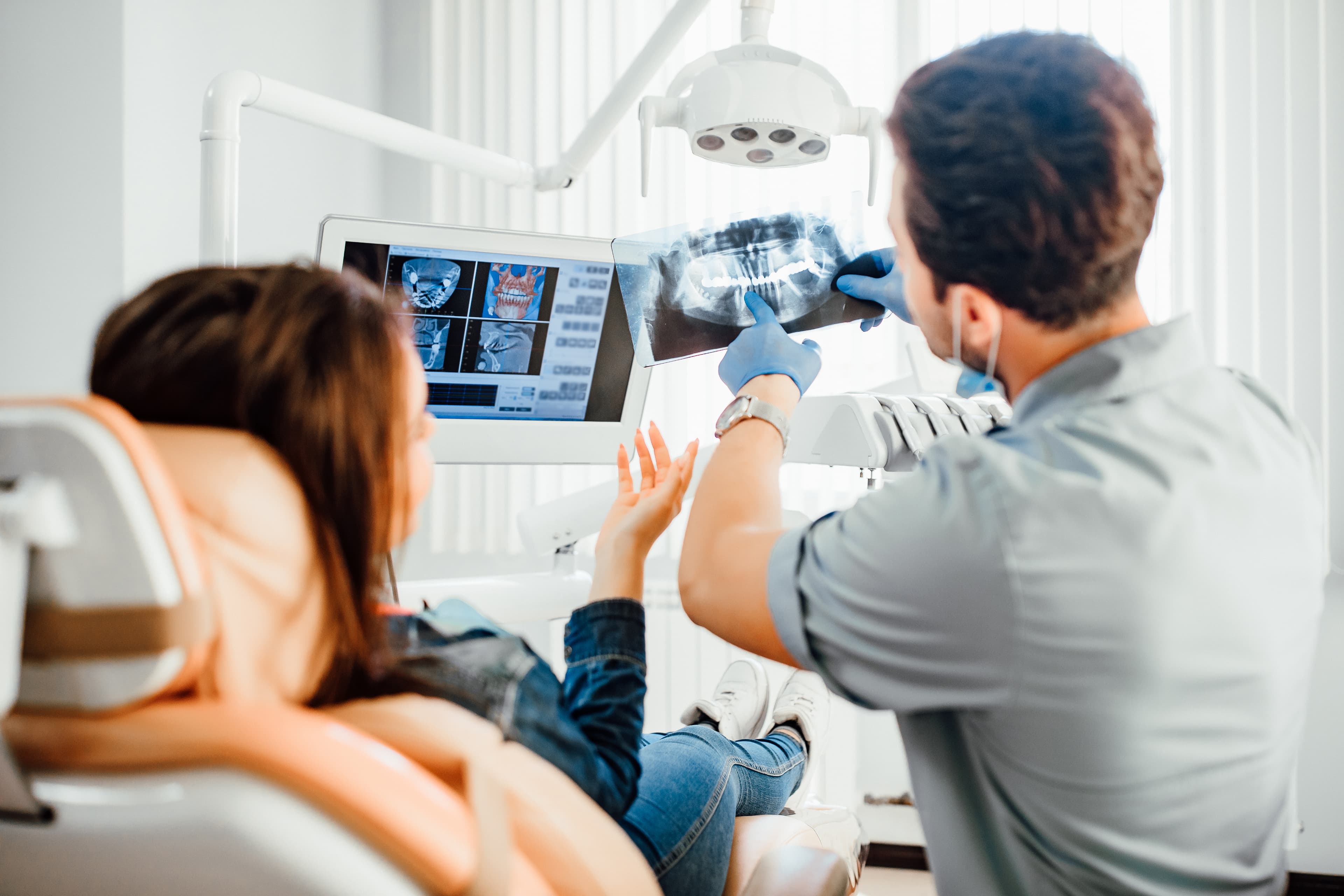
Ceramic braces are highly effective and favoured for their subtle appearance—this is the main distinction between ceramic braces and traditional metal ones. If you’re seeking a reliable clinic to begin your teeth-straightening journey with ceramic braces, MD.co.uk can help. We help you find the best dental clinics near you that provide ceramic braces at affordable rates.
Benefits of Ceramic Braces
Ceramic braces come with several advantages:
- Discrete treatment due to less noticeable braces
- Suitable for adults and teens
- It can correct many alignment problems, even severe malocclusion.
- Durable: Made from sturdy ceramic materials that don't chip or crack.
Teeth straightening is not just for beauty's sake - it can boost confidence and correct a range of dental problems. Consult your dentist to determine if you’re a suitable candidate for ceramic braces.

How Ceramic Braces Differ from Metal Braces
Ceramic and metal braces work just about the same, except for a few things. Ceramic braces are crafted from tooth-coloured or clear materials that blend with your teeth, making them less noticeable than metal braces, which are more visible and generally less aesthetic.
Roughly 75% of orthodontists offer both ceramic and metal braces. Adolescents and adults alike tend to favour ceramic brackets because of their professional appearance and because they're nearly invisible.
Another significant difference lies in cost. Metal braces are usually more affordable, while ceramic braces, using advanced materials, tend to be more expensive. Patients also need to steer clear of foods that may stain the white threads that tie ceramic braces to teeth.
Can Ceramic Braces Be Combined with Metal Braces?
Orthodontists may combine ceramic and metal braces to create a customised treatment, especially if full ceramic braces are too costly. For example, ceramic braces could be put on the upper jaw (which shows more) and metal braces on the lower. This combination is also recommended for patients with deep bites, as ceramic braces can be more prone to damage if they come into contact with other teeth.
Both types demand careful attention, proper cleaning methods and tools to remove bacteria and filth.
Types of Ceramic Braces Available
There are three types of ceramic braces:
White Ceramic Braces
Though it is called 'white', these braces are the natural colour of teeth, only with a little yellow tinge. They are great for people who have teeth that are a little darker. But if the brackets won't stain, the elastics will eventually.
Clear Ceramic Braces
Made from ceramic or polycarbonate, these braces have aluminium-based brackets that are durable and stain-resistant. Clear ceramic braces work especially well on people with lighter teeth. The brackets are stain-free, but not the ligatures, which are replaced at every check-up. Foods and beverages that stain should also be avoided.
Coloured Ceramic Braces
They are braces with coloured rubber bands on the outside that you get to choose at every appointment, so you can have the colour that you like.
Other Teeth-Straightening Options Available at MD.co.uk Partner Clinics
- Invisalign: Invisalign aligners are a favourite for those who want something almost invisible. Made of clear plastic, these aligners are snug-fitting and removable, but if they are to work, they must be used for 20-22 hours a day. Invisalign is suitable for around 90% of orthodontic cases; however, not everyone qualifies, so an eligibility assessment is essential.
- Lingual Braces: Lingual braces, which are metal braces placed on the back of the teeth so that they cannot be seen. They are very efficient, but they're usually more expensive than other braces.
- Adjusting to Ceramic Braces: Ceramic braces are comfortable and boost confidence as they’re less noticeable at a distance. However, they may still be visible upon closer inspection. It is important to take good care of it because some of the materials can stain after a long period of time.
Preventing Staining on Ceramic Braces
Ceramic braces themselves are stain proof, but the ligatures can colour from specific foods and drinks. Avoid the following to keep your braces looking their best:
- Dark-coloured berries (e.g., blueberries, raspberries)
- Curries
- Balsamic vinegar and soy sauce
- Brightly coloured sweets
- Dark fizzy drinks like cola
- Red wine, coffee, and tea
Your dentist might include other things on this list to keep those braces stain-free for the duration of treatment. It also helps not to consume hard, crunchy, or chewy things because that may damage the braces. Refrain from smoking, as it causes staining and other dental issues. You'll need to keep going to your dentist near you and get your ligatures changed every few months, to keep your teeth looking pearly white.
Teeth Whitening with Ceramic Braces
If you’re interested in whitening your teeth, it’s best to wait until your braces treatment is complete. Whitening treatments don't get everywhere around the braces, and it is not recommended to use whitening toothpaste while in braces.

Start Your Teeth-Straightening Journey!
Consider your aesthetic preferences and budget when choosing between ceramic, metal, or even Invisalign braces. Consult with your orthodontist near you to make the most appropriate choice for your needs.
It's easy to get started
01
Find Your Service
Choose from a range of medical services tailored to your needs.
02
Book Your Appointment
Select a convenient date, time, and location in just a few clicks.
03
Get Expert Care
Receive personalized, professional care from trusted healthcare providers.


